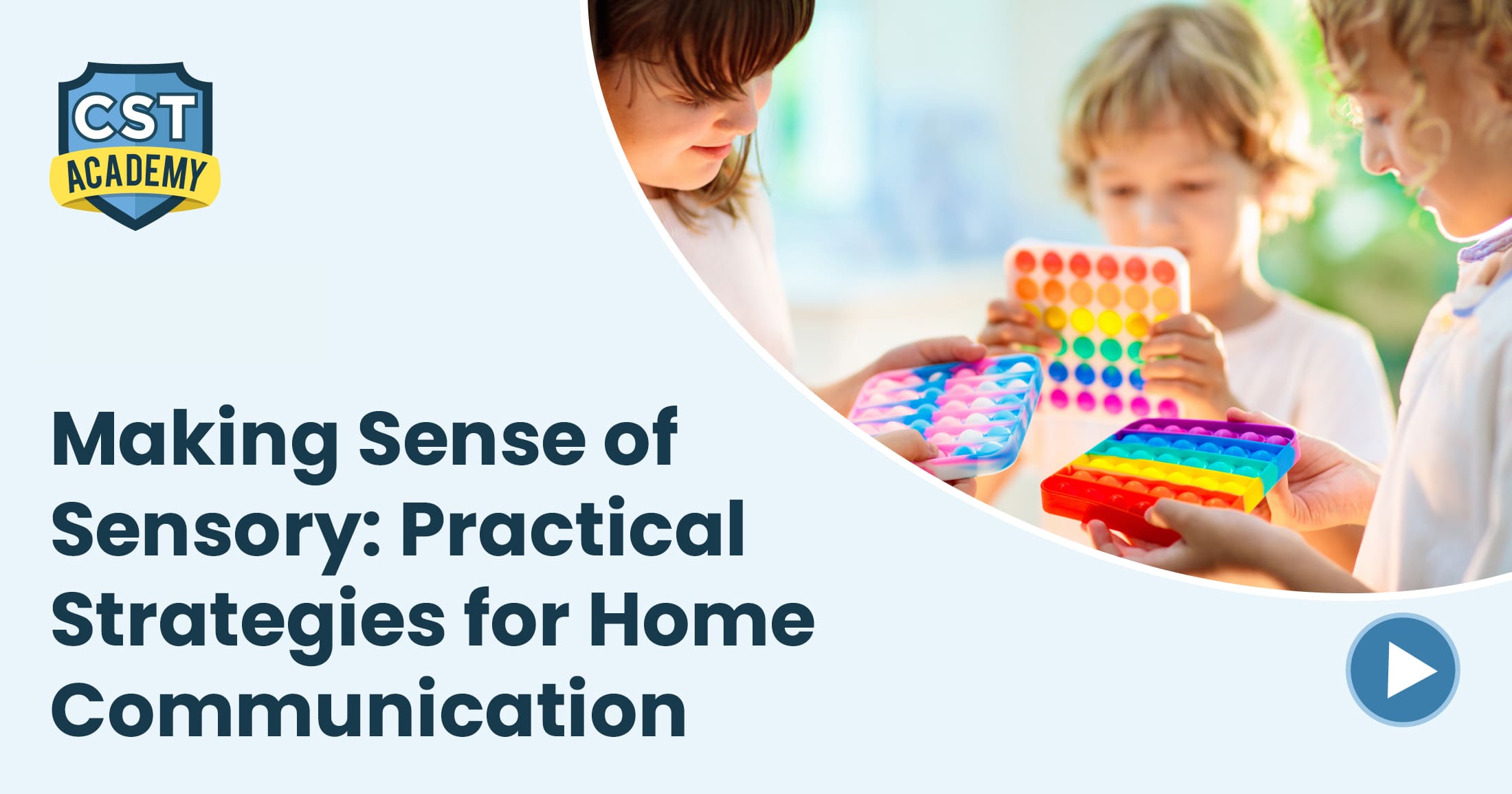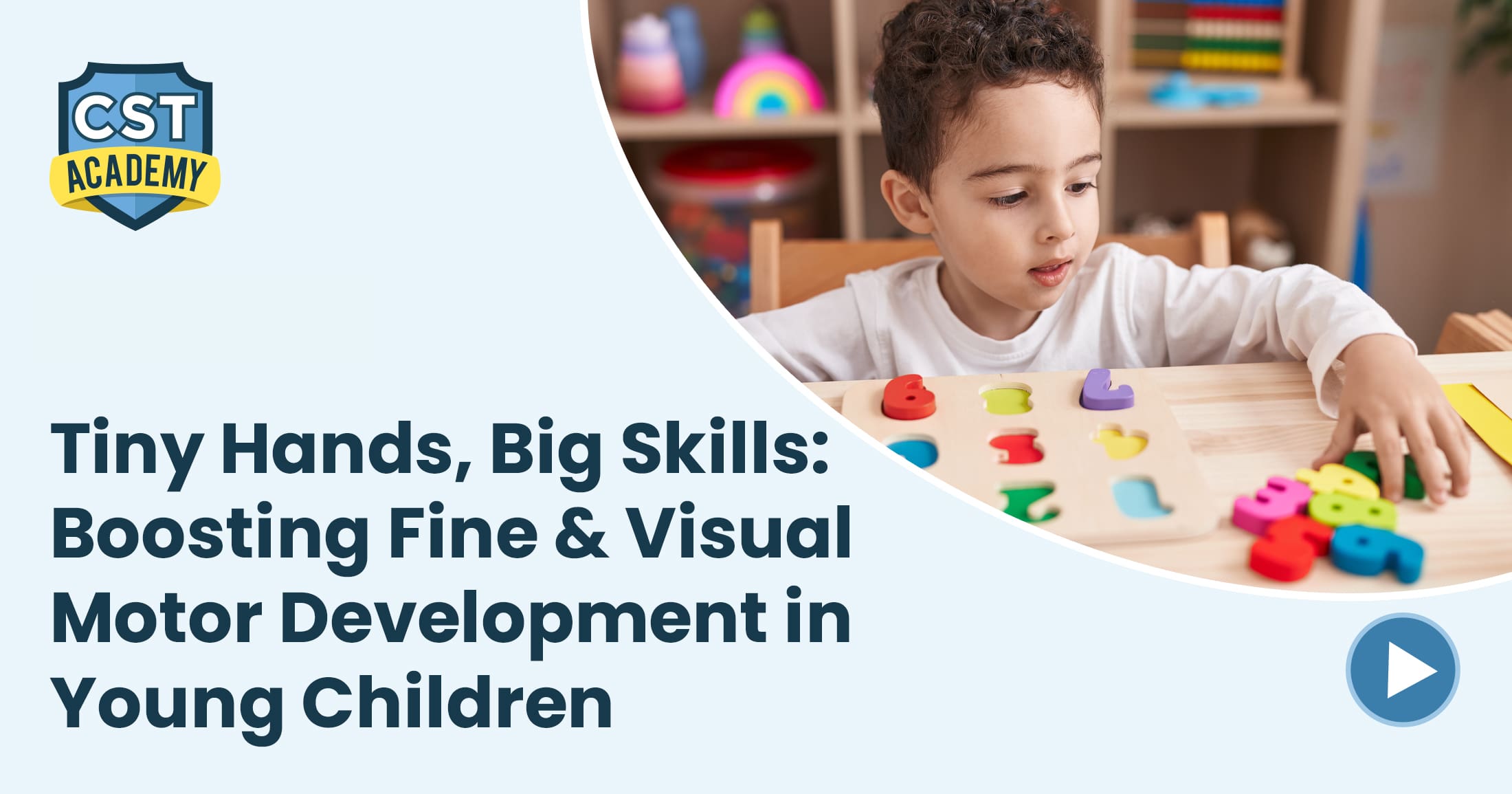Share this Post

Every child experiences the world through their senses—but for some, sensory processing can feel overwhelming or unpredictable. Whether it’s loud noises, bright lights, messy textures, or the feel of clothing tags, a child’s response to sensory input can impact everything from their mood to their ability to learn and play.
At CST Academy, we support children with sensory processing differences every day. In this article, we share practical, expert-recommended strategies that parents can use at home to help children feel more regulated, confident, and comfortable in their environments.
What Is Sensory Processing?
Sensory processing refers to the way the brain receives, interprets, and responds to information from the senses. This includes:
- Touch (tactile)
- Sound (auditory)
- Sight (visual)
- Movement (vestibular)
- Body awareness (proprioception)
- Taste and smell (oral and olfactory)
When sensory processing is typical, a child can filter, prioritize, and respond appropriately to different sensory inputs. But when there’s a sensory processing challenge, certain stimuli may feel too intense, too weak, or confusing—causing stress, avoidance, or behavioral reactions.
Signs of Sensory Processing Difficulties
Not sure if your child is experiencing sensory processing challenges? Some signs include:
- Overreacting to textures, sounds, or lights
- Constantly seeking movement (e.g., spinning, jumping, crashing)
- Avoiding messy play, tooth brushing, or haircuts
- Becoming overwhelmed in noisy or crowded environments
- Chewing on clothing or non-food objects
- Difficulty sitting still or focusing for long periods
If your child shows several of these behaviors consistently, it may be time to explore sensory integration strategies or consult with a pediatric occupational therapist.
Practical Sensory Strategies for Home
Every child is unique, and sensory needs can change day to day. Below are flexible, home-friendly strategies to support regulation and sensory balance:
1. Create a Sensory-Friendly Space
Designate a calm area in your home where your child can retreat when feeling overstimulated. This could include soft lighting, cozy textures, noise-canceling headphones, and calming visuals.
2. Build a Daily Sensory Routine
Just like adults benefit from exercise and predictability, kids often thrive with consistent sensory input. Include activities like swinging, bouncing on a therapy ball, or jumping jacks into your child’s daily rhythm.
3. Offer Heavy Work Activities
Heavy work involves pushing, pulling, or carrying objects to provide deep pressure input. This can help calm and regulate the nervous system. Try:
- Wall push-ups
- Carrying groceries or a weighted backpack
- Helping with vacuuming or gardening
4. Engage in Tactile Play
For kids with tactile sensitivity, start slow with dry textures (rice bins, kinetic sand) and gradually work toward messier play (finger painting, shaving cream). Respect your child’s boundaries while gently encouraging exploration.
5. Use Visual Supports
Visual schedules and timers can help children understand what’s coming next and reduce anxiety. Pair visuals with verbal cues for stronger communication.
6. Respect Their Sensory Profile
Some kids need extra input to stay alert, while others need less to stay calm. Observe your child’s patterns and create a customized plan that works for their needs. What calms one child may overstimulate another.
When to Consider Occupational Therapy
If sensory processing challenges are significantly impacting your child’s daily routines, behavior, or emotional well-being, occupational therapy can offer targeted support. At CST Academy, our pediatric occupational therapists conduct thorough evaluations and develop individualized plans to help children better process and respond to their environment.
Therapy sessions are fun, engaging, and always tailored to your child’s sensory profile—whether that means learning to tolerate new textures, stay focused in a classroom, or feel more confident in their body.
Empowering Parents with Tools That Work
You don’t have to be a therapist to support your child’s sensory development. With simple tools, clear routines, and a supportive environment, you can help your child thrive at home and beyond.
If you’re looking for additional support or would like to speak with a specialist about your child’s sensory needs, CST Academy is here to help.
Discover Our Pediatric Therapy & Autism Care
ABA Therapy
Support for children with autism.
Autism Evaluation
Expert assessments to identify child needs.
Pediatric Therapy Services
Speech, Occupational, Feeding, and Physical Therapy.
Therapeutic Preschool
A classroom environment designed for early learners with unique needs.
Check Out Related Posts

Find the Best Care for Your Child




